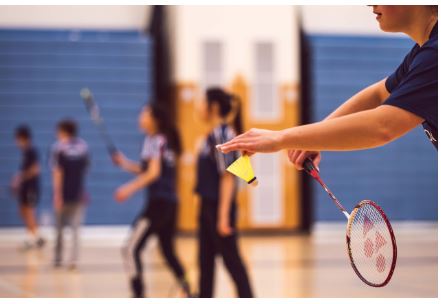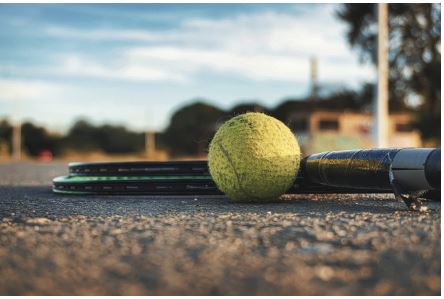Pickleball Easier than Tennis: A Comprehensive Comparison
When it comes to recreational sports and outdoor activities, the choices seem limitless. From the more traditional games like tennis to newer ones like pickleball, the options cater to a wide range of preferences and skill levels. In this article, we delve deep into the question that often arises: Is pickleball easier than tennis? By providing an in-depth comparison of these two racket sports, we aim to guide you through the nuances and help you make an informed decision about which game to pursue. Let's explore the ins and outs of both sports, from gameplay to equipment, and see if we can determine which one might be a better fit for you.
Gameplay: Pickleball vs. Tennis
Pickleball: A Fusion of Tennis and Table Tennis
Pickleball is a relatively recent addition to the world of racket sports, having gained tremendous popularity over the past decade. It's often described as a delightful blend of tennis, badminton, and table tennis, incorporating elements from each to create a unique and engaging experience. The court dimensions are smaller than those of a tennis court, resembling a badminton court, which results in shorter rallies and a more fast-paced game.
The paddle used in pickleball is solid and compact, much like a table tennis paddle, but larger. This design allows for greater control and finesse, making it an excellent choice for players of all ages and skill levels. The lightweight ball used in pickleball also contributes to its accessibility, as it doesn't require the same level of strength and endurance as tennis.
Tennis: Tradition Meets Intensity
Tennis, on the other hand, is a classic sport with a rich history dating back centuries. Known for its formal attire, grand tournaments, and iconic players, tennis exudes a sense of elegance and prestige. The larger court and heavier ball in tennis demand more physical endurance and agility. Longer rallies are common, requiring players to cover more ground and execute powerful shots.
Tennis rackets vary widely in terms of weight, head size, and string tension, allowing players to personalize their equipment based on their playing style. The diversity of playing surfaces, from grass to clay to hardcourt, adds an additional layer of complexity to the game. While tennis offers a more intense and physically demanding experience, it might not be as approachable for beginners or those seeking a less strenuous activity.
Accessibility and Learning Curve
Pickleball: A Beginner's Paradise
Pickleball's smaller court and simplified rules make it an ideal choice for beginners looking to dip their toes into racket sports. The reduced court size means less ground to cover, and the underhand serve minimizes the learning curve for newcomers. This accessibility doesn't compromise the excitement and competitiveness of the game, making it a favorite among social players and enthusiasts alike.
The slower pace of pickleball allows players to focus on strategy and shot placement, rather than relying solely on athleticism. This aspect, combined with the friendly and inclusive community that often forms around the sport, contributes to its growing popularity among players of all ages.
Tennis: A Challenge Worth Taking
While tennis may have a steeper learning curve, its rewards are equally substantial. Mastering the intricacies of serves, volleys, and groundstrokes can be a deeply fulfilling journey for those willing to invest time and effort. The larger court and faster pace demand quicker reflexes and a higher level of cardiovascular fitness.
Tennis offers a wide range of playing styles, from aggressive baseliners to deft serve-and-volley players. This diversity allows individuals to find their unique strengths and develop a playing style that suits them best. The competitive nature of tennis can lead to a strong sense of accomplishment as players improve their skills and climb the ranks.
Equipment and Cost
Pickleball: Simplicity and Affordability
One of the significant advantages of pickleball is its minimalistic equipment requirements. A paddle, a few pickleballs, and a proper court are all you need to get started. This simplicity translates to lower costs, making pickleball an attractive option for those looking for an engaging sport without breaking the bank.
Pickleball paddles come in various materials and designs, catering to different preferences. While high-end paddles with advanced features are available, beginners can easily find affordable options that provide an excellent starting point for their pickleball journey.
Tennis: Varied Choices and Investment
Tennis equipment offers a broader spectrum of choices, but this variety can also lead to higher costs. Rackets range from entry-level models to professional-grade options endorsed by top players. Strings, grips, and other accessories further contribute to the investment required to take up tennis seriously.
Maintaining tennis courts, whether private or public, adds to the overall expenses. However, the comprehensive experience and range of playing options available in tennis often justify the higher costs for dedicated enthusiasts.
Physical Demands and Fitness
Pickleball: Approachable Fitness
Pickleball's accessibility extends to its physical demands. While it provides an excellent cardiovascular workout and improves hand-eye coordination, the game is generally gentler on the joints compared to tennis. The slower pace and shorter court dimensions allow players to engage in more extended rallies without overly straining their bodies.
This makes pickleball an appealing choice for older adults or individuals looking for a low-impact way to stay active. It's an excellent option for those in search of a social activity that keeps them moving and engaged without causing excessive fatigue.
Tennis: High-Energy Intensity
Tennis, being more physically demanding, offers a high-energy workout that targets various muscle groups. The constant movement, explosive sprints, and powerful swings contribute to improved endurance and overall fitness. However, the intense nature of tennis can be challenging for individuals with joint issues or those new to regular physical activity.
Conclusion: Which Should You Choose?
In the debate of pickleball vs. tennis, the answer largely depends on your personal preferences, fitness goals, and desired level of challenge. Pickleball offers a more accessible and beginner-friendly experience, with a focus on strategy and finesse. Tennis, on the other hand, provides a more intense workout and demands a higher level of athleticism, making it a rewarding choice for those willing to invest time and effort.
Whether you opt for the fast-paced excitement of pickleball or the tradition and intensity of tennis, both sports offer unique benefits and a sense of community. So, lace up your sneakers, grab your racket of choice, and embark on a journey of athleticism, camaraderie, and fun.




